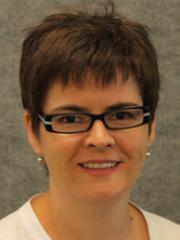Dr Liza Raggatt

Researcher biography
Delineation of osteal macrophage function in the bone microenvironment: dual roles in bone dynamics and stem cell niches.
Bone and joint diseases are a national and international health and research priority costing the Australian health system over $10 billion annually. The bony skeleton is a dynamic metabolically active tissue that is continuously remodelled and repaired to maintain calcium homeostasis and structural integrity. The microenvironment at the inner surface of long bones (endosteum), including the bone matrix and associated bone lining cells, is crucial to the dynamic processes of bone modelling and remodelling. I have recently characterized 'osteomacs' as a resident tissue macrophage population within bone lining tissues and have shown that they promote bone mineralization in vitro and are necessary for the maintenance of bone forming osteoblasts in vivo. Thus osteomacs are cellular constituents of endosteal niches and play an osteoblast-support function in this microenvironment. We are investigating the unique phenotype and expression profile (mRNA and protein) of osteomacs in order to fully delineate their functional potential in bone dynamics.
Recently it has been shown that the endosteal environment is also essential for the maintenance of mesenchymal stem cell (MSC) and haematopoietic stem cell (HSC) niches. Osteoblasts need to be present on the bone surface to ensure HSC maintenance in the endosteal niche. Therefore we hypothesised that osteomacs, as a consequence of their presence in the niche and osteoblast support-function, contribute both indirectly and directly to the generation of this stem cell nursery. We have shown that loss of osteomacs and subsequently osteoblasts occurs during G-CSF induced HSC mobilization. Importantly, in vivo depletion of osteomacs (using transgenic Mafia mice) also causes marked egress of HSC from bone marrow into the blood and spleen. These data provide compelling support that osteomacs are required for maintenance of osteoblast bone forming surfaces and provide caretaker support for the endosteal stem cell niches.
My research team has a number of projects that aim to understand the cellular architecture of the endosteal stem cell niches and the role of osteomacs in this environment. This is an essential step toward enhancing clinical HSC mobilization options in order to improve bone marrow transplantation outcomes in multiple myeloma and lymphoma and also ensuring that the promise of MSC therapy is translated into a clinical reality.
